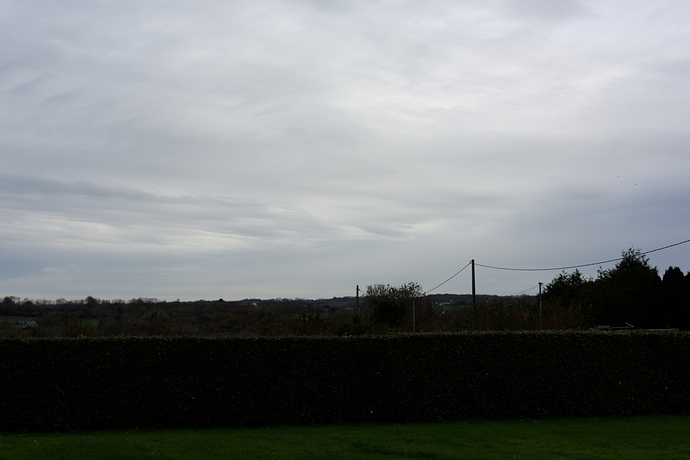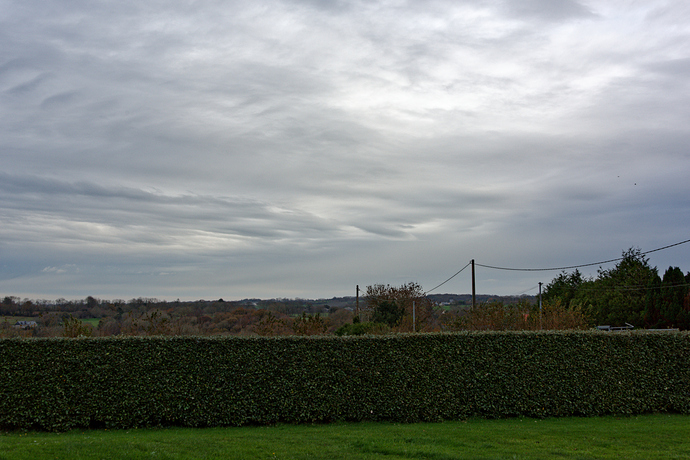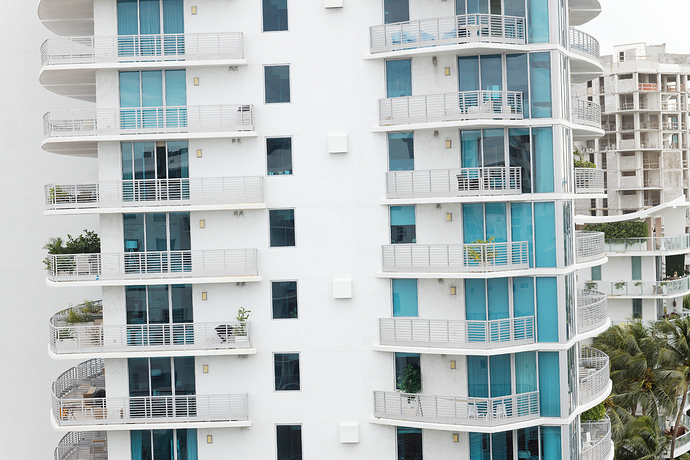OK, let’s start the analysis 
But before that, a simple rule that allows you to take a reasonably exposed photo without using a light meter - the Sunny 16 rule.
On a sunny day, set your camera to ISO 100, 1/100 sec @ f/16 and you will get a pretty good exposure. Adjust the speed or aperture as it gets progressively duller
Now to your shot…
For the first image, you used ISO 100, 1/90 sec @ f.2.8, which, apart from being able to see it in the photo, tells me that it was far from a sunny day. In fact, the light was some 6 stops less than “sunny”; duller even than “Open shade/sunset” - thus reducing the dynamic range of the shot.
In addition, these numbers tell me a couple of things about your camera settings including the fact that your exposure measurements are calculated in ½ stop increments, which gives you slightly less fine control when compared with the more usual ⅓ stop increments. Not the end of the world but possibly worth changing it sometime.
Now, your eye may tell you that the boat is white but, in fact, very little of it is truly white due to the lack of light and the angle at which the light is falling on the side of the boat nearest you.
Viewing the first shot in PL, I can actually increase the exposure by two stops without blowing the white of the boat body, thus showing that the exposure should have been near enough spot on if you had increased the exposure in the camera.
Now the boat looks white but, given the lighting conditions, possibly too white. Certainly, there is still detail in the highlights but it’s starting to look slightly unnatural
If I show the grid in PL and find the centre of the image, I assume this is where the spot meter was aimed at.
… which, indeed, looks more like the 18% grey that you would get with that reading.
Because you changed the aperture as well as the shutter speed for your second shot, you actually ended up with only virtually 1 stop of over-exposure and yet, in PL, you only need to reduce the exposure by 1/10 of a stop on this second shot to recover the highlight detail.
This can simply be down to the fact that altering the exposure in PL isn’t necessarily going to give you the exact same effect as doing it in camera.
So now we come to the question of what is the right exposure?
For this particular scene, in these lighting conditions, I would tend to offer you two possible ways to get a better shot for what is a relatively low contrast scene, mainly due to the limited light,
- use centre-weighted metering and you won’t be far off.
- spot meter but only over-expose by 1 stop to make the boat brighter but not as brilliant as it would be in bright sunshine.
With ETTR, you need to learn where to “place” the brightest exposure to give you a realistic idea of how bright the object was. I would only use +2 on a sunny day when something is truly white; otherwise you’re going to get something that looks unnaturally bright given the lighting conditions.
For this experiment to work well you are going to have to find a larger target for spot metering and on a sunnier day 
It sort of comes back to your adage of keeping it real 
Here’s my take on how I would represent the shot, based on the first shot with a little Smart Lighting and a bit of tone curve.






 but aslong as it’s suites the purpose of learning things who cares?
but aslong as it’s suites the purpose of learning things who cares? 



